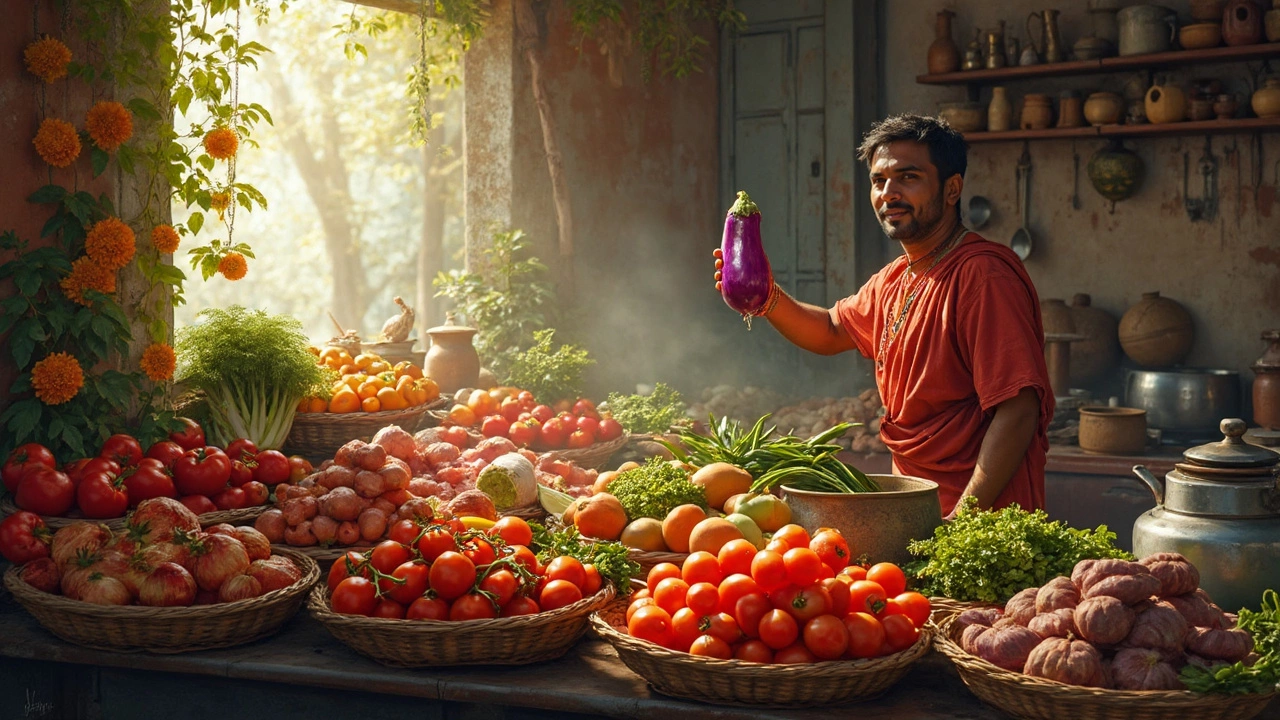Popular Vegetables in Tamil Culture: What Grows, What Eats, and Why It Matters
When you think of popular vegetables, the crops that form the backbone of everyday meals in Tamil Nadu and beyond. Also known as South Indian staples, these are not just ingredients—they're cultural anchors tied to monsoons, festivals, and family kitchens. Unlike imported superfoods or trendy kale smoothies, the vegetables eaten in Tamil households have been grown, traded, and cooked for centuries. They don’t need fancy labels. They just need rain, red soil, and a grandmother’s recipe.
Take tindora, a spiky green gourd used in stir-fries and curries across rural Tamil Nadu. Or kodampuli, a sour fruit from the tamarind tree that gives rasam its tang. These aren’t exotic imports. They’re local, seasonal, and deeply woven into food rituals. You’ll find them in popular vegetables lists at village markets, not just in urban supermarkets. Even in Chennai, you’ll see women carrying bundles of brinjal, a staple in sambar and poriyal, often grown in rooftop pots before sunrise. The same brinjal that ends up in a temple offering on Pongal day might be fried with mustard seeds for dinner that same evening.
The connection runs deeper than taste. Many of these vegetables are linked to festivals. During Karthigai Deepam, women prepare special dishes with raw banana, a vegetable symbolizing purity and abundance in Tamil households. In the monsoon, drumstick, known locally as murungai, is boiled into soups believed to cleanse the body after heavy rains. These aren’t random choices. They’re inherited knowledge—passed down through generations who knew which plants thrived in the heat, which ones healed, and which ones brought luck.
What’s missing from global lists of healthy veggies? The ones that grow in Tamil backyards: cowpea, a hardy legume used in kootu, often cooked with lentils and coconut, or snake gourd, called padavalangai, rarely seen outside South India but common in every Tamil kitchen. These aren’t trendy. They’re necessary. They feed families year-round, even when money is tight. And they’re the reason Tamil meals don’t rely on imported greens or expensive supplements.
There’s no single list of popular vegetables in Tamil culture because the list changes with the season, the village, and the family. But if you walk into any home in Madurai, Coimbatore, or Thanjavur during harvest time, you’ll see the same pattern: baskets of fresh greens, jars of dried vegetables, and pots simmering with flavors that have stayed the same for hundreds of years. These aren’t just vegetables. They’re memory, medicine, and meaning served on a plate.
Below, you’ll find articles that dig into how these vegetables show up in rituals, recipes, and regional differences—why some are sacred, others are daily, and a few are almost forgotten. Whether you’re cooking, traveling, or just curious, these stories reveal what really grows in Tamil soil—and what keeps its people fed.
